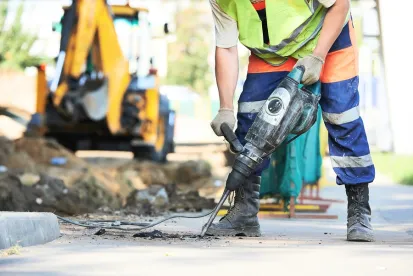On June 27, 2019, California Governor Newsom approved Senate Bill 83. This budget bill contained a provision setting a September 30, 2020 deadline for Cal/OSHA to adopt a revised lead exposure standard. The bill requires Cal/OSHA to “revise the lead standards for purposes of general industry safety orders and construction safety orders, consistent with scientific research and findings.” Specifically, the bill’s objective is to ensure the lead standard “protects the health and safety of employees who engage in lead-related construction work and meets all requirements imposed by the federal Occupational Safety and Health Administration.” While the passage of the bill ensures a revised lead standard in the near future, it’s seen as a win for California industry and employers.
Cal/OSHA has been working to revise the lead standard since 2016 when it first proposed a reduction in the permissible exposure limits for airborne lead from 50 micrograms per cubic meter to 10 micrograms per cubic meter, calculated over an 8-hour, time-weighted average. In addition to working on the revised standard, Cal/OSHA has been preparing a standardized regulatory impact analysis (“SRIA”) that includes economic impact assessments. Cal/OSHA recently submitted that SRIA to the California Department of Finance for review. After the Department of Finance completes its review, Cal/OSHA will submit a rulemaking package to the standards Occupational Safety and Health Standards Board (“board”). The board will then begin formal rulemaking, including public hearings that could be held as soon as the later part of 2019.
The September 30, 2020 deadline set by SB 83 is seen as a compromise. At the time of the passage of SB 83, there was a competing Assembly Bill, AB 457, that would have required Cal/OSHA to complete rulemaking to revise the lead air exposure limit by February 1, 2020. AB 457, also allowed for emergency regulations to be adopted by the board in order to meet the February 1, 2020 deadline. Industry groups in California strongly opposed AB 457, arguing that the February 1, 2020 deadline was unrealistic considering Cal/OSHA has yet to finalize the required economic-impact assessment.
While the passage of Senate Bill 83 pushes the deadline for a revised lead standard to September 30, 2020, this is likely just a delay of the inevitable. Cal/OSHA will likely propose a lead standard to the board that contains the lower airborne exposure limit of 10 micrograms per cubic meter, calculated over an 8-hour, time-weighted average. But the delay may be of benefit to employers as they will now be able to participate in longer and likely more robust rulemaking process.



 />i
/>i

